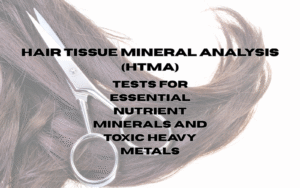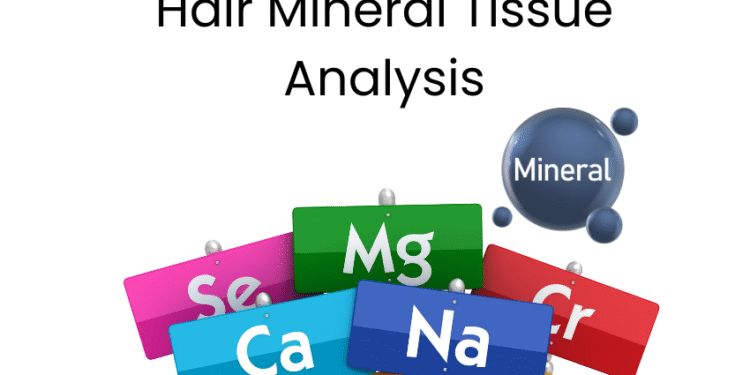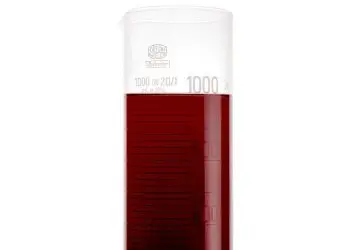Hair Mineral Tissue Analysis (HTMA) is a specialized diagnostic tool that provides insights into an individual’s mineral status and toxic metal exposure through the analysis of hair samples. This test has gained popularity in recent years as a non-invasive method to assess the body’s mineral content, which plays a crucial role in various physiological functions. Unlike traditional blood tests that may only reflect short-term mineral levels, HTMA offers a more comprehensive view of mineral accumulation over time, making it a valuable resource for health practitioners and individuals alike.
The process involves collecting a small sample of hair, typically from the nape of the neck, which is then sent to a laboratory for analysis. The laboratory measures the concentrations of essential minerals such as calcium, magnesium, potassium, and trace elements like zinc and selenium, as well as potentially harmful heavy metals like lead and mercury. By evaluating these levels, HTMA can reveal imbalances that may contribute to various health issues, providing a foundation for personalized nutritional and lifestyle interventions.
Key Takeaways
- Hair Mineral Tissue Analysis Test (HTMA) is a non-invasive diagnostic test that analyzes mineral levels in the hair to assess overall health and nutritional status.
- The test is based on the scientific understanding that hair mineral levels reflect the mineral levels in the body’s tissues and organs, providing valuable insights into mineral imbalances and toxic metal exposure.
- HTMA works by collecting a small hair sample and analyzing it for mineral content, which can reveal imbalances, deficiencies, and toxic metal accumulation in the body.
- The benefits of HTMA include early detection of mineral imbalances, personalized nutritional and detoxification recommendations, and monitoring of progress in addressing mineral imbalances.
- Individuals with chronic health issues, fatigue, hormonal imbalances, and those seeking to optimize their health and wellness can benefit from HTMA to identify underlying mineral imbalances and toxic metal exposure.
The Science Behind Hair Mineral Tissue Analysis Test
The scientific basis of HTMA lies in the understanding that hair is a living tissue that reflects the body’s mineral status over time. As hair grows, it incorporates minerals from the bloodstream, which can be influenced by dietary intake, environmental exposure, and metabolic processes. This unique characteristic allows HTMA to serve as a historical record of mineral levels, offering insights into long-term nutritional habits and potential deficiencies or excesses.
Research has shown that certain minerals play pivotal roles in enzymatic reactions, hormone production, and overall cellular function. For instance, magnesium is essential for energy production and muscle function, while zinc supports immune health and wound healing. Conversely, the presence of toxic metals can disrupt these processes and lead to various health complications.
By analyzing hair samples, HTMA can identify these critical imbalances and help guide interventions aimed at restoring optimal health.
How Hair Mineral Tissue Analysis Test Works

The process of conducting an HTMA begins with the collection of hair samples. It is essential to ensure that the hair is clean and free from any chemical treatments or products that could interfere with the results. Typically, a sample of about one inch of hair is cut close to the scalp and placed in a clean envelope or container.
Once collected, the sample is sent to a certified laboratory specializing in HTMA. Upon arrival at the lab, the hair sample undergoes a series of tests to determine its mineral content. The laboratory employs advanced techniques such as inductively coupled plasma mass spectrometry (ICP-MS) or atomic absorption spectrophotometry to accurately measure the concentrations of various minerals and metals.
The results are then compiled into a detailed report that outlines the levels of essential minerals, potential toxic elements, and any observed imbalances.
Benefits of Hair Mineral Tissue Analysis Test
One of the primary benefits of HTMA is its ability to provide a comprehensive overview of an individual’s mineral status without the invasiveness associated with blood draws or other diagnostic procedures. This non-invasive nature makes it particularly appealing for individuals who may be apprehensive about traditional testing methods. Additionally, HTMA can reveal chronic deficiencies or excesses that may not be apparent through other testing methods, allowing for more targeted interventions.
Another significant advantage of HTMA is its potential to identify toxic metal exposure. Many individuals are unknowingly exposed to heavy metals through environmental sources such as contaminated water, air pollution, or occupational hazards. By detecting these toxic elements early on, HTMA can help guide detoxification strategies and lifestyle changes aimed at reducing exposure and promoting overall health.
Who Can Benefit from Hair Mineral Tissue Analysis Test
HTMA can be beneficial for a wide range of individuals seeking to optimize their health and well-being. Those experiencing unexplained symptoms such as fatigue, digestive issues, or mood disturbances may find valuable insights through this analysis. Additionally, individuals with chronic health conditions or those undergoing treatment for specific ailments may benefit from understanding their mineral status to support recovery and enhance overall wellness.
Furthermore, athletes and fitness enthusiasts can utilize HTMA to assess their mineral levels and ensure they are meeting their nutritional needs for optimal performance and recovery. By identifying any deficiencies or imbalances, they can make informed dietary choices or consider supplementation to enhance their physical capabilities. Overall, HTMA serves as a versatile tool for anyone looking to gain a deeper understanding of their nutritional status and make informed decisions about their health.
Interpreting the Results of Hair Mineral Tissue Analysis Test
Interpreting the results of an HTMA requires a nuanced understanding of mineral interactions and their implications for health. The report typically includes a list of minerals measured along with their respective concentrations compared to established reference ranges. It is essential to consider not only individual mineral levels but also the relationships between different minerals, as imbalances can have cascading effects on overall health.
For instance, an elevated calcium level may indicate an imbalance with magnesium or phosphorus, which could affect bone health and metabolic processes. Similarly, low levels of essential trace minerals like zinc or selenium may compromise immune function or antioxidant defenses. A qualified practitioner can help individuals interpret their results in the context of their unique health history and lifestyle factors, guiding them toward appropriate dietary adjustments or supplementation strategies.
Comparing Hair Mineral Tissue Analysis Test to Other Diagnostic Tests
When comparing HTMA to other diagnostic tests such as blood tests or urine analysis, several key differences emerge. Blood tests primarily reflect current mineral levels in circulation and may not provide a complete picture of long-term mineral status or tissue accumulation. In contrast, HTMA offers insights into chronic exposure and retention of minerals over time, making it particularly useful for identifying deficiencies or toxicities that may not be evident through blood analysis alone.
Urine tests can also provide information about mineral excretion but may be influenced by hydration status and recent dietary intake. This variability can make it challenging to draw definitive conclusions about an individual’s overall mineral status. HTMA’s ability to analyze hair samples provides a more stable representation of mineral levels over time, allowing for more accurate assessments and targeted interventions.
How to Prepare for a Hair Mineral Tissue Analysis Test

Preparing for an HTMA involves several important steps to ensure accurate results. First and foremost, individuals should avoid any chemical treatments on their hair for at least four weeks prior to sample collection. This includes hair dyes, perms, or relaxers that could alter mineral content.
Additionally, it is advisable to refrain from using hair products such as gels or sprays on the day of sample collection to prevent contamination. It is also beneficial to maintain a consistent diet leading up to the test. Sudden changes in dietary habits can influence mineral levels in hair samples; therefore, individuals should aim to eat a balanced diet rich in whole foods for at least two weeks before testing.
Staying hydrated is equally important, as proper hydration supports overall metabolic function and can influence mineral absorption. In conclusion, Hair Mineral Tissue Analysis (HTMA) serves as a valuable tool for assessing an individual’s mineral status and identifying potential imbalances that may impact health. By understanding the science behind this test and its benefits, individuals can make informed decisions about their nutritional needs and overall well-being.
Whether seeking answers to unexplained symptoms or aiming to optimize performance, HTMA offers insights that empower individuals on their health journey.
FAQs
What is a hair mineral tissue analysis test?
A hair mineral tissue analysis test is a diagnostic tool used to assess mineral imbalances and toxic metal exposure in the body by analyzing a sample of hair.
How is a hair mineral tissue analysis test performed?
During a hair mineral tissue analysis test, a small sample of hair is collected from the individual’s scalp and sent to a laboratory for analysis. The hair sample is typically taken from the back of the head, close to the scalp.
What can a hair mineral tissue analysis test reveal?
A hair mineral tissue analysis test can reveal information about the individual’s mineral levels, mineral ratios, and toxic metal exposure. This information can provide insights into the individual’s overall health and potential imbalances or deficiencies.
What are the potential benefits of a hair mineral tissue analysis test?
The potential benefits of a hair mineral tissue analysis test include identifying mineral imbalances, assessing toxic metal exposure, and gaining insights into potential health issues such as adrenal fatigue, thyroid function, and metabolic disturbances.
Is a hair mineral tissue analysis test a reliable diagnostic tool?
While hair mineral tissue analysis tests can provide valuable information, it is important to note that they are not universally accepted as a reliable diagnostic tool by all medical professionals. Interpretation of the results should be done by a qualified HTMA health practitioner.










